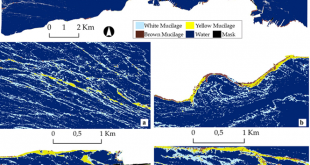ISPRS International Journal of Geo-Information, 7(3), 114; (2018)
Accuracy Assessment of Different Digital Surface Models
Alganci, U.; Besol, B.; Sertel, E.
Abstract: Digital elevation models (DEMs), which can occur in the form of digital surface models (DSMs) or digital terrain models (DTMs), are widely used as important geospatial information sources for various remote sensing applications, including the precise orthorectification of high-resolution satellite images, 3D spatial analyses, multi-criteria decision support systems, and deformation monitoring. The accuracy of DEMs has direct impacts on specific calculations and process chains; therefore, it is important to select the most appropriate DEM by considering the aim, accuracy requirement, and scale of each study. In this research, DSMs obtained from a variety of satellite sensors were compared to analyze their accuracy and performance. For this purpose, freely available Advanced Spaceborne Thermal Emission and Reflection Radiometer (ASTER) 30 m, Shuttle Radar Topography Mission (SRTM) 30 m, and Advanced Land Observing Satellite (ALOS) 30 m resolution DSM data were obtained. Additionally, 3 m and 1 m resolution DSMs were produced from tri-stereo images from the SPOT 6 and Pleiades high-resolution (PHR) 1A satellites, respectively. Elevation reference data provided by the General Command of Mapping, the national mapping agency of Turkey—produced from 30 cm spatial resolution stereo aerial photos, with a 5 m grid spacing and ±3 m or better overall vertical accuracy at the 90% confidence interval (CI)—were used to perform accuracy assessments. Gross errors and water surfaces were removed from the reference DSM. The relative accuracies of the different DSMs were tested using a different number of checkpoints determined by different methods. In the first method, 25 checkpoints were selected from bare lands to evaluate the accuracies of the DSMs on terrain surfaces. In the second method, 1000 randomly selected checkpoints were used to evaluate the methods’ accuracies for the whole study area. In addition to the control point approach, vertical cross-sections were extracted from the DSMs to evaluate the accuracies related to land cover. The PHR and SPOT DSMs had the highest accuracies of all of the testing methods, followed by the ALOS DSM, which had very promising results. Comparatively, the SRTM and ASTER DSMs had the worst accuracies. Additionally, the PHR and SPOT DSMs captured man-made objects and above-terrain structures, which indicated the need for post-processing to attain better representations.

Available Online: https://doi.org/10.3390/ijgi7030114
 UHUZAM İTÜ – Uydu Haberleşme ve Uzaktan Algılama UYG-AR Merkezi
UHUZAM İTÜ – Uydu Haberleşme ve Uzaktan Algılama UYG-AR Merkezi 